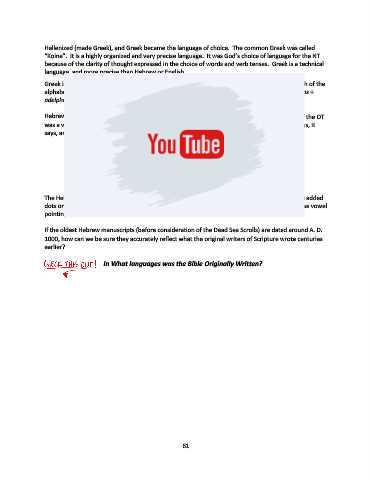Page 62 - Doctrine and History of the Preservation of the Bible Student Textbook
P. 62
Hellenized (made Greek), and Greek became the language of choice. The common Greek was called
“Koine”. It is a highly organized and very precise language. It was God’s choice of language for the NT
because of the clarity of thought expressed in the choice of words and verb tenses. Greek is a technical
language, and more precise than Hebrew or English.
Greek is easier to learn as many parts of our language is based upon it, so we can recognize much of the
alphabet and many of the words. Example: Philos = friendly or loving, Adelphos = brother Philos +
adelphos = Philadelphia “City of Brotherly Love”
Hebrew is another story. Hebrew looks like a chicken walked across the screen. The Hebrew of the OT
was a very ancient language (probably the language of Adam). It is concrete in tone. What it says, it
says, and does not contain the ability to express shades of meaning as either English or Greek.
The Hebrew of the OT does not contain vowels like our language, and more modern Hebrew has added
dots or “vowel pointings” to help better read and understand it. OT Hebrew did not contain these vowel
pointings.
If the oldest Hebrew manuscripts (before consideration of the Dead Sea Scrolls) are dated around A. D.
1000, how can we be sure they accurately reflect what the original writers of Scripture wrote centuries
earlier?
In What languages was the Bible Originally Written?
61

